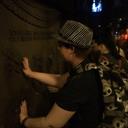Where did the gingerbread house tradition originate?
A gingerbread house is a novelty confectionery shaped like a building that is made of cookie dough, cut and baked into appropriate components for walls and roofing. The usual material is crisp ginger biscuit made of gingerbread – also referred to as the ginger nut. Another type of model-making with gingerbread uses a boiled dough that can be moulded like clay to form edible statuettes or other decorations.
These houses, covered with a variety of candies and icing, are popular in some countries as Christmas decorations.
Although Catholic monks were credited for baking the first-ever gingerbread, it was also shaped into different forms by monks in Franconia, Germany in the 13th century. 'Lebkuchen' bakers are recorded as early as 1296 in Ulm and 1395 in Nuremberg, Germany. Nuremberg was recognized as the "gingerbread capital of the world" when in the 1600s the guild started to employ master bakers and skilled workers to create complicated works of art from gingerbread.
The Germans came up with the idea of making gingerbread houses 'lebkuchenhaeusle' during the 18th century. According to food historians this was after the publication of "The Brothers Grimm" fairy tale, 'Hansel and Gretel' in which two children abandoned in a forest found an edible house made of bread with sugar decorations. At that time, gold leaf, icing, and foil was used to decorate the edibles.
The Germans loved it so much and brought the tradition with them when they migrated to America.
More Info:
en.m.wikipedia.org




